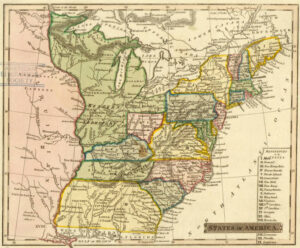
By Kris Leonhardt
Editor-in-chief
ONEIDA NATION – A bicentennial celebration was held July 25-29 to commemorate a time long ago when the Oneida Nation came to the area to create a new homeland.
The sovereign government was once part of a confederation — the Five Nations of the Iroquois Confederacy — along with the Cayuga, Mohawk, Onondaga and Seneca.
The unification of the nations took place under the “Great Tree of Peace” as they pledged not to make war with those who belonged to the confederation.
The Oneida homeland existed in the upper Mohawk Valley and what is now Oneida, in the state of New York.
The Tuscarora joined the confederacy in the 1700s and the Six Nations co-existed through a matriarchal hierarchy and a men’s council, while owning millions of acres in New York.
During the Revolutionary War, the Oneida assisted the new European colonies, serving in General George Washington’s army.

In return, the 1794 Treaty of Canandaigua promised the protection of their homelands, stating that the “lands reserved to the Oneida, Onondaga and Cayuga Nations in their respective treaties with the State of New York, and called their reservations, to be their property; and the United States will never claim the same, nor disturb them or either of the Six Nations, nor their Indian friends, residing thereon, and united with them in the free use and enjoyment thereof; but the said reservations shall remain theirs, until they choose to sell the same to the people of the United States, who have the right to purchase.”
A year earlier, the United States had also adopted the Non-Intercourse Act, which prohibited the purchase of Native lands without the government’s approval, but the state of New York continued to enter into land transactions and the Oneida were down to 32 acres by the early 1800s
In 1822, the Oneida signed a treaty with the Menominee and Ho Chuck nations, purchasing millions of acres as their new homeland.
“The game, land and seasons were familiar in Wisconsin and our people were decidedly more comfortable here. We negotiated with the Menominee to share their lands, and we came to an agreement in 1822,” said former general manager/strategist, Bill Gollnick during a presentation at the July 25 breakfast held during the celebration week.
“In 1823, some Oneida families, ‘First Christian Party’ loaded horse-drawn wagons packed up with pine boxes of essentials and what they could carry in a sack and left their homelands. For roughly three weeks, they traveled over rough trails to get to the port of Buffalo, N.Y. From there they boarded a ship that took between five to seven days to travel along the western shore of Michigan, through the Mackinaw Island straits then on to Fort Howard in Green Bay. The new territory was the edge of the west and there were no log homes or cleared land, so the Oneidas settled in Little Kakalin on the Fox River roughly 29 miles south,” read an article in the Oneida Nation’s weekly newsletter “Kalihwisaks.”
But, their first winter would be a difficult one.
Continued next week
